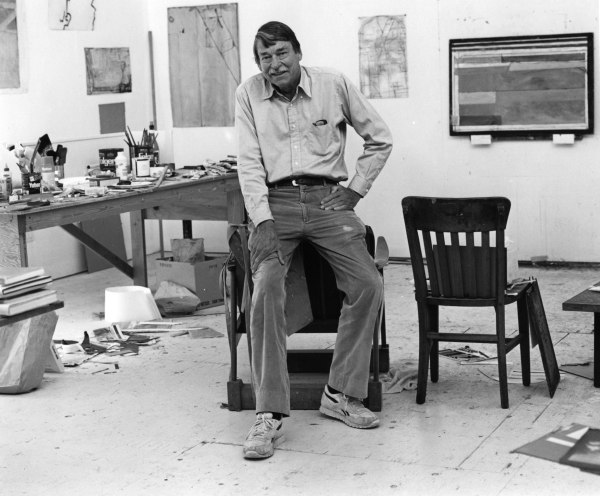Gagosian, 980 Madison Avenue, New York
November 8–December 20, 2025
Gagosian has announced its representation of Richard Diebenkorn (1922–1993). To inaugurate its partnership with the Richard Diebenkorn Foundation, Gagosian will present an exhibition of paintings and works on paper at 980 Madison Avenue in New York, opening on November 8, 2025. This marks a return of the distinguished American painter, draftsman, and printmaker’s work to the location, as the gallery presented eleven Ocean Park paintings there from November 1992 to January 1993—the artist’s final exhibition of paintings before his death in March 1993.
Larry Gagosian notes: “Richard Diebenkorn was an incredibly important figure of the postwar era whose work remains influential today. We got to know each other in California, and I was fortunate to have the opportunity to visit his studio a handful of times. It’s a great honor for me and the gallery to carry his legacy forward, and I am thrilled that his works will once again be shown at 980 Madison.”
Working for almost all his life in California, Diebenkorn pursued a distinctive career, beginning as an Abstract Expressionist, developing a unique approach to figuration in the mid-1950s, and a decade later returning to abstraction with the masterful Ocean Park series (1967–88). The interchange between abstraction and figuration that took place over the course of his career is an essential aspect of his achievement. In an era when a single direction defined many artists’ production, Diebenkorn moved fluidly across modalities and embraced an active approach to composition and revision, often retaining traces of a work’s process and creation—what the artist referred to as a picture “sitting right.”
Curated by Jasper Sharp in collaboration with the Richard Diebenkorn Foundation, the exhibition features six decades of the artist’s works on paper and paintings from every period, emphasizing continuity and variation. The works on view include a striking range of examples from across Diebenkorn’s career, including a 1943 watercolor that reflects the influence of Edward Hopper and Paul Cezanne, paintings from his Abstract Expressionist years, a rarely seen monumental 1960 canvas of nudes that exemplifies his long-term engagement with Henri Matisse and anticipates the scale of the epic Ocean Park cycle, and selections from his final decade that provide insights into his working practice.

Courtesy the Richard Diebenkorn Foundation and GagosianDiebenkorn’s drawings and paintings on paper, using ink, graphite, charcoal, collage, gouache, oil, and acrylic evince the artist’s love of both mark making and using paper as a substrate. The sweep of this work reveals a vigorous experimentation with forms and subjects, from the rigid geometry of a 1975 ink and gouache Ocean Park sheet, to an intricate and luminous c. 1988 mixed-media work on joined poster board; from a c. 1988–91 gouache in which he maximized the simplicity of a flat brush’s rectilinear stroke against a creamy, coated surface, to a vertical work made late in life on which he used charcoal to layer foliage-inspired lines over a modified grid.
Diebenkorn Richard Diebenkorn, Untitled, 1969, gouache, graphite, and ink on graph paper, 15 1/2 × 11 inches (39.4 × 27.9 cm) © 2025 Richard Diebenkorn Foundation/Artists Rights Society (ARS), New York
Esteemed scholar John Elderfield, who began visiting the artist at his home in 1985 prior to curating The Drawings of Richard Diebenkorn for the Museum of Modern Art in New York (1988–89), referred to his “thinking in drawing” that “allows him access to what he intended.” “The exhibition demonstrates Diebenkorn’s extraordinary facility with different media and his command of scale, as well as the pictorial refrains that resonate across his oeuvre through decades of both abstract and representational work,” observes Sharp. “Diebenkorn sustained conversations that have unfolded across centuries, engaged deeply with his contemporaries, and forged a path that continues to inspire artists today.”

